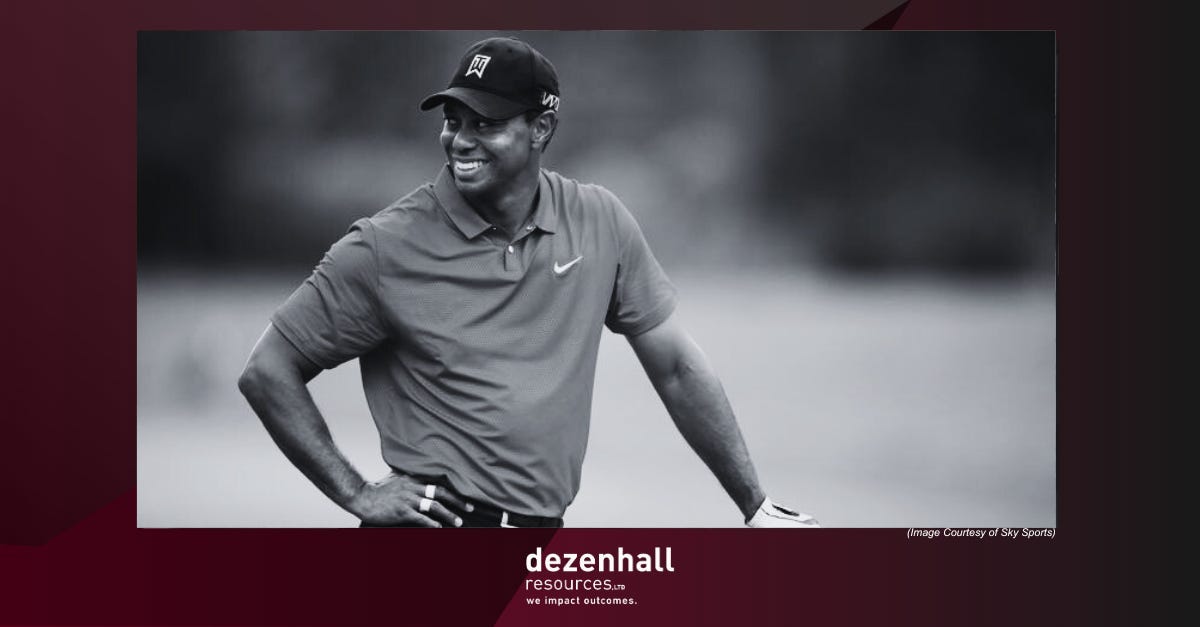Dez Reads. Sphere's Spectacular Surge, Ride-Share Riddles, Kennedy's Campaign Echo, and more.
Welcome back to Dez Reads, your essential digest of the week’s most subtly influential stories. This week, we explore the surge in revenue following the Sphere Las Vegas opening, the newfound profitability paths for Uber and Lyft, the media's adaptation to transformative changes, the enduring allure of the Kennedy legacy, the mixed reception of Apple's Vision Pro, and Tiger Woods' latest venture into lifestyle branding with Sun Day Red.
Each story offers a unique lens through today’s evolving narratives, prompting us to question, analyze, and reflect on the past week’s events. As we unpack this week’s articles, our goal extends beyond informing – to spark insightful discussions and a deeper understanding of the narratives influencing our 24-hour media landscape.
Here we go.
Finance + Commerce.
The Hollywood Reporter: Sphere Entertainment Posts Revenue of $314M in First Full Quarter with Venue Open
Sphere Entertainment is buzzing after its first full quarter since the Sphere Las Vegas opened, with a whopping 96.9% revenue boost to $314 million. The Sphere segment alone raked in $167 million, thanks to massive ticket sales for over 200 events. Yet, it’s not all rosy; the company saw a net loss of $173.2 million due to high operational costs and a significant $117 million charge for ditching their London project.
Some investment analysts are riding high on the Sphere’s potential, elevating their stance to a ‘Buy’ and eyeing a $50 target price. They’re digging the debut performance but keeping an eye on this budding business model’s challenges and the MSGN segment’s lag. Sphere’s got big dreams to shake up live entertainment, with plans to operate year-round and expand worldwide.
But here’s the catch: those dreams come with their own set of hurdles. The MSGN segment is on the downslide, and the cost of erecting these futuristic venues isn’t cheap. As Sphere Entertainment charts this new course, they embody the exciting and challenging landscape of tech-infused entertainment. Each innovation brings a new challenge, setting the stage for what might be the next big wave in live shows.
- Mark Emerson
WSJ: Have Uber and Lyft Finally Found a Way to Make Ride-Sharing Profitable?
Disclaimer: I have counseled numerous “sharing economy” tech companies during my time at Dez.
There has been plenty of discussion of the typo in Lyft’s earnings outlook last week (shout out to CEO David Risher’s perfect crisis comms response: “My bad”). WSJ took a deeper look at the two top players in the rideshare market, Uber and Lyft, and how they’ve defied (or may defy) expectations that profitability isn’t possible.
I am a fan of the democratization of work that the sharing economy offers, but I count myself among the early skeptics that these business models were workable. Uber famously disrupted the taxicab industry by taking advantage of cheap VC cash and an unregulated market, snapping up market share at breakneck speed. The question was always what would happen when investors would demand sustainable profitability to go with the decade of impressive growth.
According to Youssef Squali, an analyst covering both companies, the rideshare concept has proved itself to the point that consumers see it as a utility and thus will accept the higher prices needed to drive profitability. The question is no longer whether Uber and Lyft can be profitable but how high they can drive their margins.
- Josh Culling
Culture & Media.
The New Yorker: Is the Media Prepared for an Extinction-Level Event?
Media and culture are intrinsically intertwined. As a kid, I relished sitting at the kitchen table reading the Sunday paper cover to cover with my parents. I still love a hard copy paper when I can find one, and that’s becoming increasingly more difficult. That ritual of coffee and cover-to-cover news consumption is no longer because media as we once knew it is now extinct. In this New Yorker piece, Malone recounts the major shifts in the media business and reader consumption over the last 30 years. While this is a long(er) read, it’s worth a deep dive if you can spare 15 minutes. The irony that Dez Reads is in its infancy is not lost on me, and here we are already talking about what happens if “traditional news” (whatever that means to you) becomes a thing of the past.
After reading this, I find myself with more questions than answers and can’t help wondering if there is a business model to sustain good-quality, interesting journalism into the future.
- Anne Marie Malecha
NYT: A 30-Second Kennedy Ad Collides With a Decades-Long Family Legacy
A political action committee supporting the candidacy of Robert F. Kennedy, Jr. for president ran an advertisement during the Super Bowl evoking the memory of his uncle, JFK’s 1960 campaign. Setting aside the politics, what struck me was the enduring power of the imagery of Camelot, at least for me. As a kid, I devoured everything I could find on JFK, including assassination conspiracies.
Why was I so interested in all of this? After all, I was a year old when JFK died. Nor can I claim that in the 1970s, I had a particular political ideology. Reflecting on this, I concluded — with a bit of shame — that I was drawn toward the evocative imagery that came with all things Kennedy. If nothing else, they were magnificent. Just look at the photos of the young president and his wife in the hours and moments before his murder. When cinematic glamour is juxtaposed with violent death, the brain can’t make sense of it. Then came the muck of Vietnam, as if Kennedy had been a bulwark against it. You start looking for meaning where there is none. You see gunmen in the shadows when they aren’t there. My question is, “Does the Kennedy mystique even mean anything anymore?” To my kids, JFK is just another face in the flashcards of past presidents.
- Eric Dezenhall
Tech.
The Verge: Apple fans are starting to return their Vision Pros
The honeymoon period for Apple’s Vision Pro might be over before it truly begins. From social media buzz to tech forums, users are voicing a collective lament over the $3,500 device’s comfort, headaches, and eye strain, turning the dream of immersive tech into a somewhat uncomfortable reality.
The Vision Pro is undeniably a piece of tech wizardry. But it seems to have overlooked a fundamental aspect of wearable tech: the human element. The weight and design of the headset are meant to transport users to digital nirvana but are instead leading some down a path of physical discomfort. Reports of motion sickness and even a burst blood vessel underscore the delicate balance between innovation and user well-being.
Then there’s the big question – what’s the Vision Pro really for? Is it a tool for work, a new way to enjoy entertainment, or something else entirely? Right now, it’s stuck in limbo, not fully satisfying either. The absence of a standout app is making me wonder if it’s really worth the hefty price tag.
This brewing discontent among early adopters poses a crucial question for Apple. Can the allure of cutting-edge technology overcome the hurdles of physical comfort and practical application? As some users eagerly await a second-gen iteration, it’s clear that the journey of wearable tech is far from over. In the quest for the perfect fusion of innovation and usability, the Vision Pro’s growing pains may just be the reality check the industry needs.
- Mark Emerson
Sports.
NYT: Tiger Woods Introduces His New Brand: Sun Day Red
After ending his 27-year relationship with Nike, Tiger Woods announced a new clothing line in partnership with TaylorMade Golf - Sun Day Red (see what they did there?). While details of the deal are sparse, it will be branded as a lifestyle brand for both athletes and non-athletes with a line that includes cashmere sweaters.
This effort to capture lifestyle customers with these types of deals instead of just athletic wear has been a growing trend in the star athlete world. In 2019, Roger Federer became both an investor in and a guest designer for On, the Swiss sneaker company. Tom Brady has Brady, and Serena Williams has a fashion line called S by Serena.
TaylorMade did not disclose if Tiger has any equity in the brand, but my guess is that was an integral part of any discussions he was having with the brand. Athletes now know their personal brand is marketable and profitable; they no longer need huge ad campaigns to show the world who they are, how they dress, and their “coolness,” for lack of a better term (think the big sneaker deals and promos of the Magic Johnson era days).
With many people still working from home (either full or part-time) and opting for more comfortable but stylish clothing, there might be an addressable market there.
Now, they just need to think of a way to recreate this epic branding opportunity from the 2005 Masters, where the Nike logo on the ball hung on screen just long enough before dropping in the hole.
- Mike Bova










